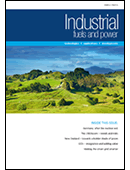Australia unveils carbon tax plans
On Sunday, Australia unveiled its long-awaited carbon tax plans. The country’s worst 500 polluters will be required to pay a carbon tax of AUD23/t from 2012 with the provision to increase the tax by 2.5% annually. In addition, the government also paved the way to adopt the largest emissions-trading scheme (ETS) outside Europe. For voters fearing higher power and fuel bills, there were tax cuts to sweeten the pill.
“Australians want to do the right thing by the environment,” said Prime Minister Julia Gillard, whose country is the rich world’s worst per capita greenhouse gas emitter due to a heavy reliance on ageing coal-fired power stations for electricity generation. “That is why the Gillard government is implementing a comprehensive plan for a clean energy future for our nation,” she added.
Australia’s ETS will cover 60% of its carbon pollution apart from exempted agricultural and light vehicle emissions, with Treasury department models showing it would boost the consumer price index by only 0.7 percent in the first year of the tax, in 2012-13 (July-June).
The new tax will take effect form the middle of next year before moving on to a carbon-trading system in mid-2015. The government hopes to link its scheme to other international carbon markets and land abatement schemes when its ETS is operational. With the tax and trading scheme, the government aims to cut carbon pollution by 159Mt or 5% against 2000 base levels by 2020.
The ETS is expected to cost AUD4.4bn to implement after household and industry compensation. Gillard said the government would spend AUD9.2bn over the first three years of the scheme to limit the impact to heavy polluting industries such as steel and aluminium. The most emissions-intensive and trade-exposed sectors would receive free carbon permits covering 94.5% of average costs while moderately-emitting export industries would get 66% of permits free. Coal miners would be eligible for an AUD1.3bn compensation package to provide some relief to the impact of the tax, which would see AUD1.80/t added to the cost of mining coal.
The government will also help to close down the oldest and dirtiest power stations, aiming to remove up to 2GW of power capacity by 2020 and thereby making a significant cut in the 37% slice of national emissions taken up by coal-based power generation.
The announcement puts paid to months of uncertainty and provides potential investors with a transition to a flexible price phase on which they can base their investment decisions.
“This is possibly a game-changer for renewable energy for Australia. But the key is this is probably the beginning of a long transition to a clean energy future,” said Pacific Hydro General Manager Lane Crockett. “You’ve got to think that the introduction of a carbon price with all those supporting policies will be very positive for investment in renewable energy. What we believe is that putting these in place will: a) there will be the benefit from the programmes themselves; and secondly there will be the investment certainty that will allow us to go ahead with our projects that we’ve currently been holding back on.”
However, not everybody is happy with the new scheme. The plans have come under fire from industry and related bodies. “This imposes a carbon cost on Australian aluminium producers of at least $60 per tonne of aluminium compared to only $8 per tonne in China,” said Miles Prosser, executive director of the Australian Aluminium Council. “Australia’s carbon cost will rise every year of the scheme and over the next decade to more than $200 per tonne of aluminium while in China it is not expected to get any higher than $60. The Government only wants you to look at the first year of the scheme. The initial costs are bad enough but we need to look at the huge cost increases that are being locked in for the future.”
The country’s booming LNG sector called for 100% protection from the ETS, but will receive only half of that. The sector is due to decide on AUD90bn worth of new projects. Belinda Robinson, CEO of the Australian Petroleum Production & Exploration Association was quoted by Reuters as “”The export gas industry rejects the politically motivated label of ‘big polluter’ when for every tonne of emissions produced in liquefying natural gas, up to nine and a half tonnes are removed from the atmosphere when substituted for coal in customer countries. Whether used in Australia or exported, gas has a big part to play in reducing global emissions and there is no rational reason for a policy that sees Australian gas use increase but exports constrained.”
Michael Fraser, CEO of AGL Energy takes a more cautiously positive stance. “We need to work through the detail of what has been announced today, but clearly the package has attempted to address a number of key concerns including risks to the efficient and reliable operation of the electricity market, particularly in Victoria and South Australia. AGL supports the introduction of a price on carbon emissions as soon as possible to provide investment certainty for the energy industry as Australia begins the transition to a low carbon economy.”
No Responses
Leave a Reply
Make sure you enter the * required information where indicated.
You must be logged in to post a comment.

 Click here to read the Q4 2011 Issue of Industrial Fuels & Power
Click here to read the Q4 2011 Issue of Industrial Fuels & Power 

